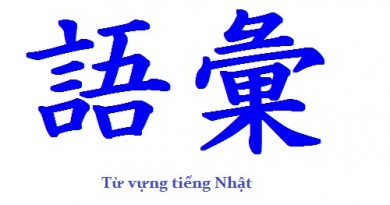Japanese vocabulary on food packaging
Nowadays, the river of life flows always so hastily. Sometimes our work is so busy that we have to buy processed foods in the supermarkets to cook or to eat instantly. Japanese foods are not only popular in Japan, but also in other countries. You must be always concerned about all the information written on the packaging. Today, Learn Japanese daily will help you learn about Japanese vocabulary on food packaging (Kanji) in the easiest way.
General information:
Japanese vocabulary on food packaging:
– 種類別名称 Shurui betsu meishō : Category name.
– 商品名 Shōhin-mei : Product name.
Sometimes written as: 品名 hinmei
– 栄養成分 Eiyō seibun: Nutrition facts.
– 保存方法 hozonhouhou : Preservation methods.
– 内容量 Naiyōryō : Net weight.
– 成分 seibun : Composition.
Sometimes used as a part of the phrase: 主要栄養成分 (Shuyō eiyō seibun): Main nutrition facts or 栄養成分 (Eiyō seibun): Nutritional composition.
– 生産者 Seisan-sha : Manufacturer.
– 原産国名 Gensan kokumei : Country of origin.
– 産地 Sanchi or 地 元 (jimoto): Manufacturing location.
-加工年月日 Kakō nengappi : Date of production.
– 消費期限 shouhikigen or 賞味期限 – shoumikigen : Expiry date (best before date).
– 輸入者 Yunyū-sha : Importer.
– 国産 Kokusan : Domestic goods.
Composition, origin.
In this section, Learn Japanese daily will teach you about Japanese vocabulary on food packaging. Which ones are natural and which ones contain certain chemical substances that you need to take note of.
– 養殖 Yōshoku: Farmed products.
– 自然 食品 Shizen shokuhin : Natural foods.
– 自然 派 Shizenha : Naturalists.
– 有機 Yūki : Organic.
For example: 有機 野菜 (Yūki yasai) : Organic vegetables.
– 農薬 (Nōyaku) : Agricultural chemicals.
– 無農薬 Munōyaku : Chemical free.
– 無添加 Mutenka: Non Additives.
– 保存料 Hozon-ryō : Preservatives.
– 着色料 Chakushoku-ryō : Artificial colorants.
– 遺伝子 組 み換 え idenshikumikae : Genetically Modified Organisms (GMOs).
– 放射性 物質 Hōshasei busshitsu : Radioactive chemical elements.
– 放射性 物質 検査 合格 Hōshasei busshitsu kensa gōkaku : Indicates products that have been tested and are free of radiation.
– 手作り Tesakuri : Hand-made, home-made.
– 砂糖 不使用 Satō fu shiyō : Sugar free.
– グルテン 不使用 Guruten fu shiyō : Gluten free.
Usage:
– 解凍 Kaitō : Required to be thawed (before cooking).
– 生食用 Namashokuyō : To be eaten raw (without cooking).
– 加熱用 Kanetsu-yō : Required to be cooked before eating.
– 刺身用 Sashimi-yō : Raw fish used to make sashimi.
We have learnt how to read Japanese vocabulary on food packaging, Kanji in particular. You can now be confident that you understand what’s written on the packaging and choose the right products. If you can’t memorize them, print them out and bring them along when shopping.
Above is the “Japanese vocabulary on food packaging” article. Read more about other Japanese vocabulary articles in section: Japanese vocabulary by theme on Learn Japanese daily.


